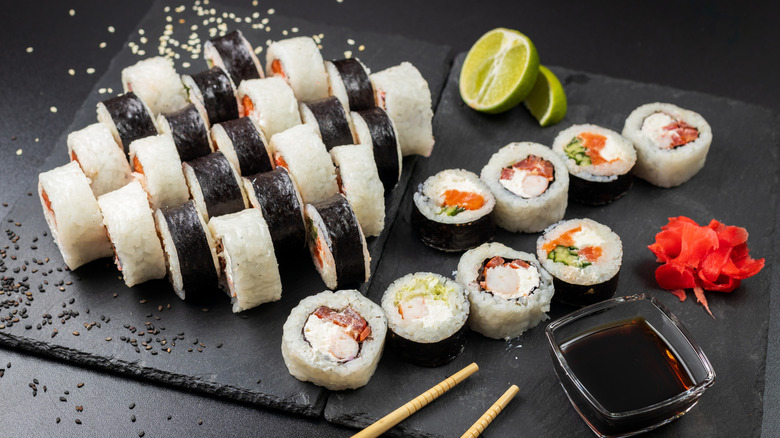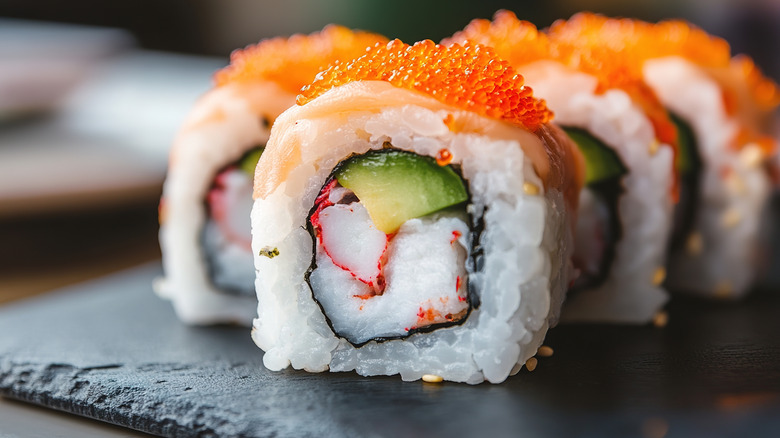What's The Difference Between East And West Coast Sushi, Anyway?
Although sushi's American debut definitely came about on the west coast thanks to Japanese immigrants, the rice and seafood treat has become a staple throughout the United States. But don't expect that the most popular rolls on one coast are going to be the same on another. Much like San Francisco sourdough bread is slightly different than its counterparts from other regions, there is some variance between east and west coast sushi, especially when it comes to the protein used.
Keep in mind that for most people the differences refer to the California sushi roll, which comes with rice on the outside and a variety of fillings on the inside (more traditional styles have a sheet of nori on the exterior). True to the name, the California roll didn't originate in Japan. Depending on which source you consult, however, it came from one of two different places. Some say it was first served in 1960s Los Angeles and created by chef Ichiro Mashita. Or it may have come from Vancouver, Canada, where Hidekazu Tojo is said to have developed the dish. Meanwhile, a version of the roll created on the East Coast would take its cues from the California roll, but with the addition of a new protein: shrimp instead of crab.
New York sushi rolls have a unique seafood twist
Regardless of who introduced it, it's clear the California roll was created for the American palate. The ingredients included nori, English cucumber, avocado, and short-grained rice ... with one important change. Back them, few Americans were willing to eat raw fish. Sticks of crab meat (nowadays, imitation crab is also common) were substituted and helped make sushi more acceptable to potential diners. Not to be left behind, New York created its version of the California roll. To that end, the New York roll contains all of the ingredients of a California roll, except it substitutes cooked shrimp instead of crab. Occasionally, you might find a New York roll that contains smoked salmon, along with cream cheese and cucumber.
Though it may seem a minor swap, the protein choices lend a distinct texture and flavor to each style of roll. Cooked shrimp offers more of a chewy texture. The taste may be enhanced based on how it was prepared, typically sautéed, steamed, marinated, or fried tempura-style. Imitation crab has a more delicate bite. Either roll is usually served with wasabi and pickled ginger. They could also be topped with sesame seeds, spicy mayo, or any other of a variety of sauces.

